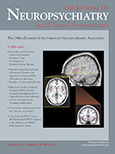The Effect of Transient Ischemic Attack Clinical Pathway
Abstract
Background:
Clinical pathway (CP) of transient ischemic attack (TIA) is an interdisciplinary, comprehensive, standardized management model for medical care of TIA. It aims to standardize the procedure, reduce the cost, and improve the quality of medical care. However, its effect is still unclear.
Objective:
To evaluate the effect of TIA CP and provide evidence for control of medical care cost, optimize the structure of hospital cost, and make best use of medical resource.
Methods:
112 patients in the CP group and 179 patients in the nonclinical pathway (NCP) group were included in this nonconcurrent cohort study.
Results:
The average length of stay was 9.55±3.89 days in the NCP group, and it was 7.26±2.09 days in the CP group. The average length of stay was significantly shortened by 2.29 days. Hospital cost in the CP group significantly increased by 7.9% (868 yuan) compared with that in the NCP group. The proportion of medication cost significantly decreased by 5%, while the proportion of examination cost significantly increased by 8%. As for the clinical outcomes of patients with TIA, 98.21% of the patients in the CP group were discharged in a good condition, while the proportion was 97.77% in the NCP group, and no significant difference was found between the improvement rate of the two groups. Eight patients (4%) in the NCP group were admitted to the hospital because of a 30-day recurrent TIA or cerebral infarction; four of them had cerebral infarction, whereas no recurrent TIA or cerebral infarction was found in the CP group at the 30-day follow-up.
Conclusions:
Implementation of TIA CP could reduce the length of stay, the proportion of medication cost, and optimize the structure of hospital expense, thus making best use of medical resources and improve the quality of TIA medical care.



